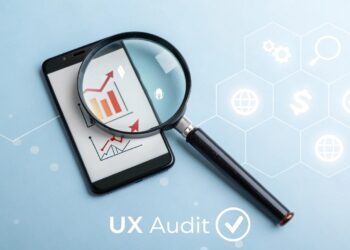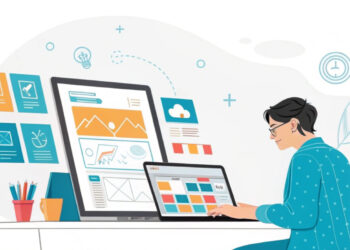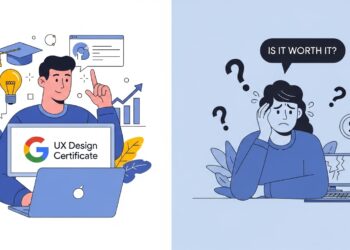If you’ve ever mixed up what a Product Designer and a UX Designer do, you’re not alone! Many people use these titles like they mean the same thing, but they’re actually quite different. Both are important in creating great digital products, yet their focuses and responsibilities vary widely.
Understanding the difference between a Product Designer vs UX Designer matters more than ever for your career and team success. Whether you’re a designer looking to grow or a business deciding whom to hire, this post will help you get clear on what sets these two paths apart.
Let’s explore 10 key facts that reveal how these roles work, connect, and make your favorite apps and websites so enjoyable to use.
What a Product Designer Does
A Product Designer is like the Swiss Army knife of digital design. They think about the entire product, from the first idea to the final user experience. Their job is to make sure the product looks amazing, works smoothly, and supports the company’s goals.
According to designlab.com, Product Designers manage the whole product lifecycle, combining design with strategy. They focus on how a product meets user needs while also aligning with business outcomes.
In simple terms, a Product Designer wears multiple hats:
- Creator: They come up with design ideas that solve real problems.
- Strategist: They plan a product’s growth and features over time.
- Designer: They design interfaces that are beautiful and functional.
- Collaborator: They work with marketing, engineering, and product teams to keep everything on track.
Product Designers don’t just make things look good—they make them work for everyone. They use research, creativity, and data to make big design decisions that impact the whole product.
So, if you love working on the “big picture” and guiding a product from start to finish, Product Design might be your calling.
What a UX Designer Does
While a Product Designer looks at the full product experience, a UX Designer goes deep into how users actually interact with that product. Their mission is simple: make things easy, enjoyable, and effective for users.
User Experience (UX) design focuses on how real people think, feel, and behave when using a product. It’s about keeping things simple and intuitive. A UX Designer tests every click, scroll, and swipe to ensure it feels natural.
As uxpin.com explains, UX Designers use design thinking—a creative process that helps them understand user problems and test solutions quickly. They gather insights through user research, interviews, and usability tests.
A UX Designer’s typical duties include:
- Conducting user interviews to find pain points.
- Creating wireframes and prototypes to test ideas.
- Running usability tests to see what works best.
- Working with developers to bring those designs to life.
UX Designers are the voice of the user within a team. They make sure that products don’t just look good but are actually useful.
10 Key Facts That Distinguish a Product Designer vs UX Designer
Let’s break things down with ten clear differences that show how these two design roles complement each other.
1. Scope of Work
Product Designers handle the entire product experience — from discovery to delivery. Their scope spans product strategy, design, and analysis.
UX Designers, on the other hand, zoom in on how users interact with the product, ensuring the journey feels smooth and satisfying.
2. Design Focus
Product Designers balance aesthetics, usability, and business goals. They ask, “How will this design drive results?”
UX Designers center on user emotions, interaction flow, and overall satisfaction. They ask, “Will users love using this?”
3. Collaboration Style
Product Designers work hand in hand with product managers, marketers, and engineers. They ensure every team’s efforts align with the brand vision.
UX Designers often partner with researchers, copywriters, and UI designers to optimize the user journey based on feedback and testing.
4. Tools and Techniques
Both roles use many of the same design tools, but they use them differently.
Common tools include:
- Figma and Sketch for designing interfaces.
- Adobe XD for prototyping.
- Miro for brainstorming ideas.
- UsabilityHub or Hotjar for testing how real users respond.
While UX Designers frequently conduct usability tests, Product Designers might focus more on design systems and branding consistency.
5. Research and Strategy
Research is key for both roles — but the type of research differs.
- Product Designers combine market research and user feedback to build designs with business impact.
- UX Designers conduct in-depth interviews and user tests to uncover emotional and behavioral insights.
As uxtweak.com notes, Product Designers often integrate business goals and communication strategies into the design process, while UX Designers prioritize deep user understanding.
6. Business Alignment
Product Designers are closely tied to company success metrics — conversion rates, retention, engagement, and revenue. They often discuss KPIs and roadmap goals.
UX Designers measure their work through usability and satisfaction ratings, focusing on what makes the user’s life easier.
According to productschool.com, organizations that emphasize business growth tend to hire Product Designers to bridge design and product strategy.
7. Visual vs Functional Emphasis
Product Designers pay close attention to visual systems—things like brand consistency, layout harmony, and visual storytelling.
UX Designers care more about functionality—how easy it is to complete a task or navigate the interface.
Both perspectives are needed to turn complex ideas into seamless user experiences.
8. Problem-Solving Approach
Both roles use design thinking, but in different ways. As bejamas.com explains, Product Designers think holistically, asking, “What’s best for the brand and business?” UX Designers ask, “What’s best for the user?”
Product Designers often solve broader challenges involving product positioning and long-term growth. UX Designers focus on the user’s moment-to-moment experience and interaction clarity.
9. Career Path
Many designers start as UX Designers and later transition into Product Design roles. This makes sense—the UX foundation helps them create products that prioritize users.
careerfoundry.com points out that the biggest difference comes down to scope. Product Designers take on more responsibility for overall product strategy, while UX Designers dive deeper into functionality and testing.
If you enjoy hands-on testing and user research, UX design is ideal. If you prefer leading projects and blending creativity with strategy, Product Design may be a better fit.
10. Impact on User and Business Outcomes
Product Designers measure success by how well the product performs in the market — growth, engagement, and retention.
UX Designers measure success by improved user satisfaction, ease of use, and accessibility.
Together, they create products that are beautiful, useful, and profitable — a win for both users and businesses.
Product Designer vs UX Designer: When to Hire Each
So when should a business hire a Product Designer versus a UX Designer?
If you’re launching a new app or product that needs creative direction, strategy, and vision — choose a Product Designer. They can own the full process from concept to launch.
If your product already exists but needs better usability or improved user satisfaction, hire a UX Designer to refine the experience.
As userpilot.com explains, Product Designers work where design meets business, while UX Designers work where design meets the user. Both roles are essential, depending on the stage of your product journey.
Example:
- A startup building its first product hires a Product Designer to create a roadmap, design system, and app flow.
- Later, they bring in a UX Designer to test features, improve interactions, and make users smile.
Common Misconceptions About Product Designer vs UX Designer
Myth 1: They’re the same job.
Truth: While they share some skills, Product Designers deal more with product strategy; UX Designers focus deeply on user behavior.
Myth 2: Product Designers don’t do research.
Truth: They absolutely do—but their research often includes market analysis in addition to user testing.
Myth 3: UX Designers don’t care about visuals.
Truth: Great UX Designers understand the visual side, too! But their main priority is usability.
Both roles overlap—especially in smaller teams—but understanding their unique strengths helps teams function better and build better products.
Which Career Path Fits You Best?
Choosing between Product Design and UX Design depends on your interests and goals.
Ask yourself these questions:
- Do I love creative strategy and seeing the big picture? Then Product Design might be perfect.
- Do I enjoy understanding people and testing ideas? UX Design may be the right fit.
- Do I like balancing both creative and analytical work? Both roles could suit you as your skills grow!
Skills for Product Designers:
- Strategic thinking
- Visual design
- Communication with stakeholders
- Business and market awareness
Skills for UX Designers:
- Empathy and research
- Usability testing
- Prototyping and wireframing
- Design thinking
Both careers offer exciting paths in tech. Many professionals start as UX Designers, learning user research and testing, then expand into Product Design to lead broader projects.
Conclusion
In today’s fast-paced design world, the lines between Product Designer and UX Designer can blur—but they remain distinct, complementary roles. Product Designers think broadly about business, design, and product alignment. UX Designers think deeply about the people interacting with those products.
Remember the 10 key differences you learned: from scope and collaboration to business focus and problem-solving approach — each role brings unique value to product creation.
If you’re building your career, choose the path that matches your passion. If your company is hiring, consider what your current product truly needs: user-centered refinement or big-picture strategy.
Want to dive deeper into your design journey? Keep exploring learning platforms like DesignLab, CareerFoundry, and UXPin to sharpen your skills and stay ahead.
Start today — grow your creativity, learn strategically, and shape the future as a next-generation Product Designer or UX Designer.









